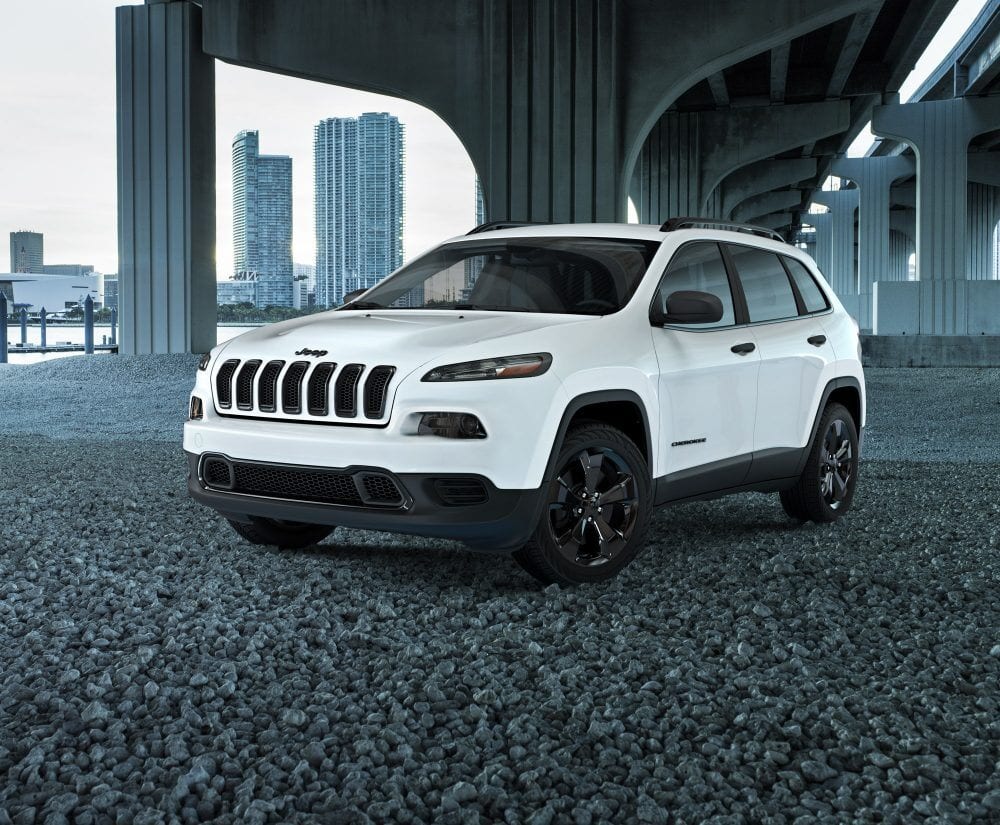The XJ Cherokee is an all-time automotive legend. Its immense off-road capability, brutal simplicity, and rock-solid dependability attracted all sorts of buyers. After it became old enough to vote, it was replaced with the Jeep Liberty, which was not quite as loved. Ugly, crude, and rudimentary, the Liberty had but one redeeming quality: it didn’t ruin the Cherokee nameplate. A few years after redesigning the Liberty, Jeep decided its nameplate was tarnished. So, in 2014, the Cherokee came roaring back.
Sort of. This new Cherokee lacked much of what made the XJ special. First, there was the styling. The new Cherokee looked like it was trying to jog its memory after seeing a vaguely familiar-looking face. Built on a front-wheel-drive based platform, its off-road credentials nearly vanished, though it was still relatively capable. Finally, while the XJ Cherokee was crappy in a “charming” way, the new Cherokee was crappy in a more “crappy” way.
The Cherokee now carries the stigma that it is “an crossover.” What’s more, in an era when everything is a crossover, the Cherokee isn’t just a crossover — it’s a relatively bad crossover. It isn’t particularly good at anything except off-roading, but most Jeep buyers interested in off-roading will want a Wrangler. Given the remaining pool of consumers, the Cherokee has become a rolling symbol of a credit check result whose first digit is “4.”
Naturally, this has caused vehicular fans to abhor the Cherokee. Car enthusiasts loathe crossovers, especially those that bear once-legendary nameplates. Among the most common gripes is their headlights could illuminate a construction site on the dark side of the Moon. And instead of pointing toward the road, they aim directly into the retinas of the nearest Miata driver. And here is where the Jeep Cherokee was truly brilliant.
Most readers will know the squinty headlights that define the Cherokee’s look are not actually headlights. They’re turn signals. The actual headlights are mounted significantly lower, where one might expect to find fog lamps. This means the headlights illuminate from about the same height as those on a traditional car.
If you drive a lower vehicle and an SUV has ever been behind you at night, you know why this is relevant. Headlights appear much brighter when viewing them from below. Cars are getting taller. And, by disguising turn signals as headlights and headlights as fog lights, the Cherokee came inadvertently close to solving this problem.
Of course, the Cherokee was not the first vehicle to incorporate this design trick. The Nissan Juke used a similar setup, though its actual headlights were a bit higher and much more conspicuous. The Pontiac Aztek even used a primitive version of this design, its headlights mounted below turn its signals. But the Cherokee came closest. Though its design was not exactly a roaring success, it did demonstrate the possibility of mounting headlights lower on SUVs while keeping a modicum of style.
In some existing vehicles, this idea could come to fruition without any alteration whatsoever to design. A signature Cadillac element is headlights that appear to continue into the bottom of the front fascia — relocating the collapsed sun to the lower extremity would, presumably, be a simple task. This would result in better visibility for other motorists with zero compromise to looks or performance.
Pontiac, Nissan, and Jeep have shown this can be done. Perhaps another automaker will show they can do it well.


Leave a Reply